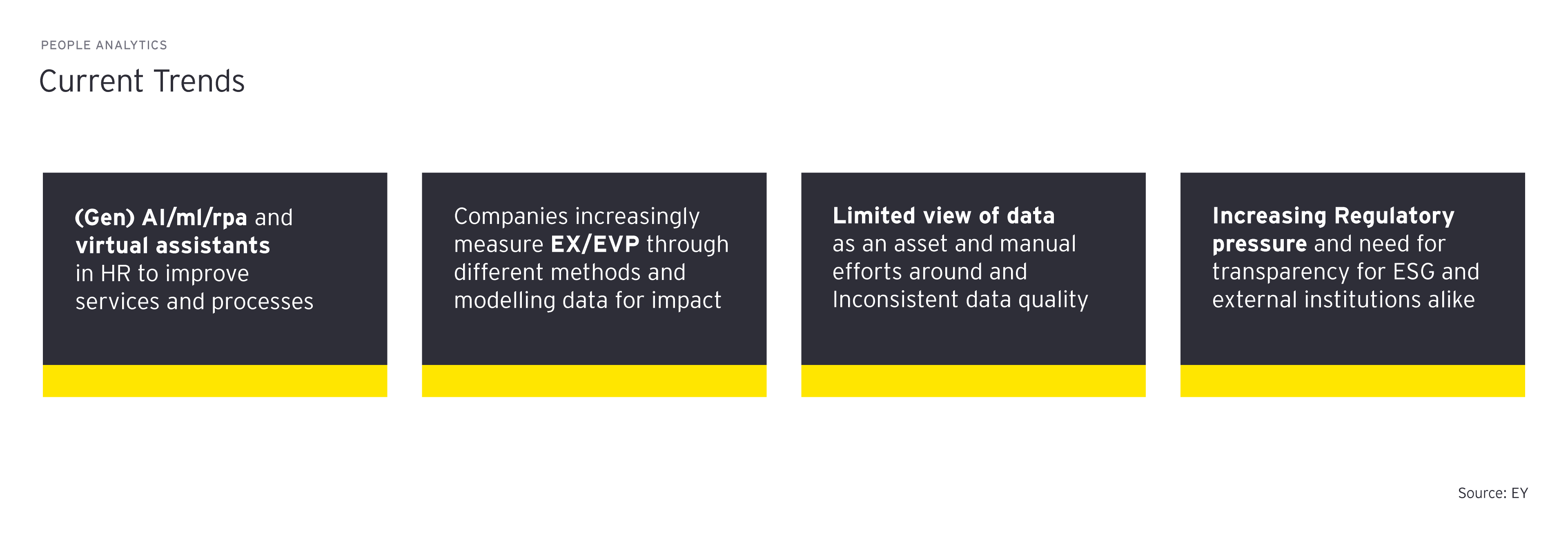EY refers to the global organization, and may refer to one or more, of the member firms of Ernst & Young Limited, each of which is a separate legal entity. Ernst & Young Limited is a Swiss company with registered seats in Switzerland providing services to clients in Switzerland.
How EY can help
-
Our professionals can help you establish workforce analytics that can inform regular action planning, reporting and ongoing program oversight. Learn more.
Read more -
Our HR Transformation team can help transform your Human Resources team from HR function to human value activator. Learn more.
Read more -
EY People Experience can help you build insight, develop interventions and scale people experience capabilities. Learn more.
Read more
Leveraging operational HR insights
For companies committed to efficient HR management, it is a strategic imperative to incorporate components such as process analysis, optimized resource allocation and budgeting as well as accurate performance tracking into their daily operations. Below we provide some examples of how operational HR skills can be leveraged:
Optimizing HR workflows: Process mining enables HR departments to visualize, analyze and optimize their workflows. By mapping out the entire employee lifecycle from hire to retire, organizations can identify bottlenecks, streamline processes and reduce administrative burdens. This leads to faster onboarding, improved compliance and enhanced overall operational efficiency.
Allocating resources strategically: Operational HR analytics empowers organizations to strategically allocate their resources. HR teams can optimize workforce planning, identify skills gaps and allocate budgets where they will have the most impact. A proactive approach ensures that resources are utilized efficiently and that the organization remains agile in responding to ever-changing demands from the business.
Cost-benefit analysis of HR initiatives: Operational data allows HR to perform cost-benefit analyses on its various initiatives, whether it is a new recruitment campaign, training programs or a workplace technology initiative, to ensure that any investment made contributes efficiently to the wider organizations bottom line.
Embracing operational HR analytics empowers organizations to achieve greater efficiency in human resource management and to ensure that the department maximizes its potential within the financial budget.
Challenges in harnessing operational HR and workforce data
Unlocking people data’s value within organizations can be challenging. Legacy systems, outdated and incompatible with modern tools, create hurdles for data analysis. Inconsistent practices across units result in data silos and conflicts over ownership. To conquer these challenges and reveal data’s potential, leaders should establish robust data governance in the people data domain. Standardization ensures data consistency, while data security safeguards against expensive breaches.
Data governance serves as a guiding compass, navigating organizations through the complexities of data management and positioning them for success.
Data quality as an imperative
Ensuring data quality is critical to the future success of any organization. Poor data quality can have significant consequences by affecting decision-making, employee satisfaction, legal compliance and resource allocation. Inaccurate or incomplete data can lead to misguided hiring decisions, legal complications and inefficiencies in HR processes.
This especially applies when artificial intelligence (AI) and advanced analytics are introduced into HR processes, making data quality even more important. AI systems rely on historical data to make predictions and recommendations, but if this data is tainted with biases or inaccuracies, issues are likely to be perpetuated. It may lead to biased hiring recommendations, inefficient automation, ineffective predictions and potential damage to the organization’s reputation due to wrongful legal reporting.







